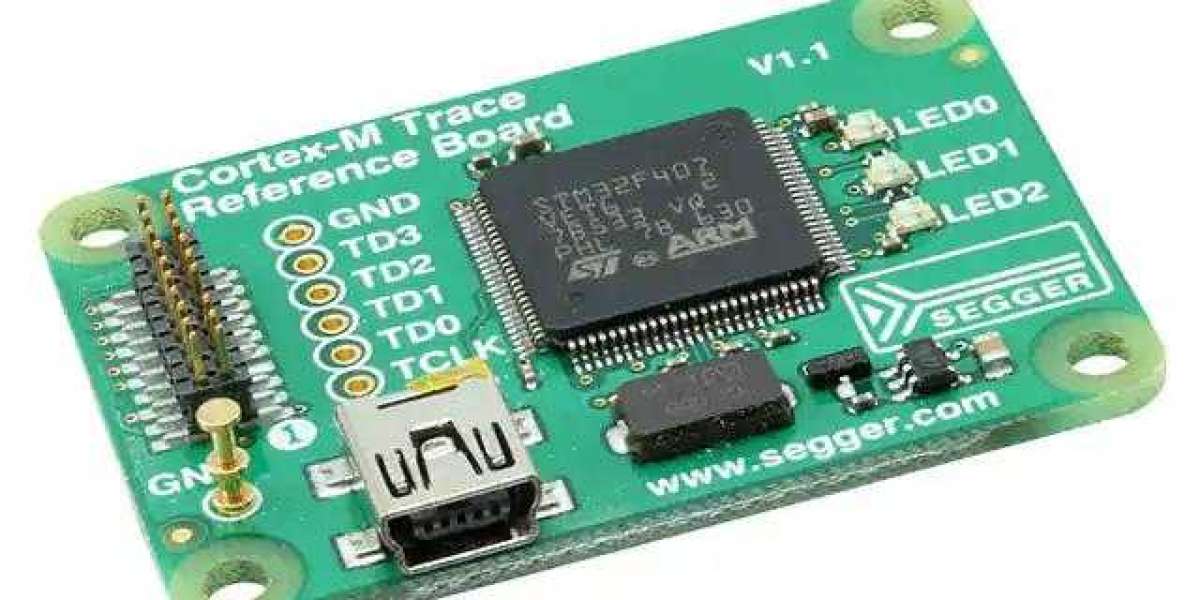In the ever-evolving world of semiconductors, ensuring the quality and reliability of integrated circuits (ICs) is of paramount importance. Testing these complex electronic components requires sophisticated equipment and techniques, and one crucial tool in this process is the probe card. A probe card acts as a bridge between the IC and the testing apparatus, facilitating the precise measurement of electrical signals and enabling the identification of any potential defects. We will explore the role of a Probe Card Manufacturer in revolutionizing semiconductor testing.
Understanding the Probe Card:
Before delving into the advancements made by probe cards and manufacturers, it is essential to grasp the fundamentals of a probe card. The probe card is a critical component of a semiconductor testing setup, responsible for establishing electrical contact with the IC under examination. It consists of a small circuit board, often made of high-quality materials like ceramic or organic substrates, onto which hundreds or even thousands of tiny probes are attached. These probes, usually made of tungsten or beryllium copper, are meticulously designed to make contact with specific points on the IC.
Traditional Challenges in Probe Card Manufacturing:
Manufacturing a probe card presents numerous challenges that probe card manufacturers have grappled with for years. Some of the key challenges include:
- Precision and Reliability
Probe card manufacturing demands an exceptionally high level of precision. The probes must be positioned with utmost accuracy to ensure proper contact with the IC's bonding pads, which are often less than 100 micrometers in size. Additionally, the probe card must be reliable enough to withstand thousands or even millions of contract cycles without any loss in performance.
- Cost and Time-to-Market
With the semiconductor industry's rapid pace of innovation, time-to-market is a crucial factor for probe cards and manufacturers. Developing and manufacturing a probe card that meets the requirements of new IC designs while keeping costs in check can be a significant challenge. Balancing performance, reliability, and affordability is a delicate task that requires expertise and innovation.
- Customization
Every IC design is unique, with different requirements for probe card specifications. Probe card manufacturers need to be able to customize their products to match the specific needs of each customer. This customization can range from adjusting the probe density and alignment to accommodating non-standard IC sizes or shapes.
Revolutionizing Probe Card Manufacturing:
Over the years, probe card manufacturers have made significant advancements, revolutionizing the field of semiconductor testing. Let's explore some of the key innovations that have transformed probe card manufacturing:
- Advanced Materials and Manufacturing Techniques
To meet the demand for precision and reliability, probes card manufacturers have embraced advanced materials and manufacturing techniques. The traditional tungsten probes have been replaced with more durable materials like beryllium copper, which offers improved electrical conductivity and a longer lifespan. Additionally, the use of advanced machining and lithography technologies allows for the creation of smaller, more accurate probes.
- Multi-DUT Probe Cards
Multi-DUT (Device Under Test) probe cards have emerged as a game-changer in semiconductor testing. These probe cards feature an array of probes that can make simultaneous contact with multiple ICs, significantly reducing testing time and increasing throughput. Multi-DUT probe cards have become particularly valuable in applications where large volumes of identical ICs need to be tested, such as memory chips or microcontrollers.
- Vertical Probe Cards
Vertical probe cards are another innovation that has transformed the landscape of semiconductor testing. Traditionally, horizontal probe cards were used, where the probes made contact with the ICs from the side. However, vertical probe cards have gained popularity due to their ability to make contact from the top of the IC, eliminating the need for complex and expensive packaging techniques. Vertical probe cards offer improved signal integrity, reduced probing complexity, and enhanced thermal management.
- Probing System Integration
Probe card manufacturers have recognized the importance of seamless integration between the probe card and the testing system. By collaborating closely with testing equipment manufacturers, probe card can develop customized solutions that optimize performance and reliability. This integration extends beyond mechanical aspects and includes advanced software interfaces, allowing for efficient data exchange and automation.
- Advanced Testing Techniques
As IC designs become increasingly complex, probe card manufacturers are continuously innovating to keep up with the testing requirements. They have developed advanced testing techniques, such as built-in circuitry for signal conditioning and calibration. These techniques help compensate for signal distortions caused by various factors, such as high frequencies or noise, resulting in more accurate and reliable test results.
The Future of Probe Card Manufacturing:
As the semiconductor industry continues to push the boundaries of innovation, the role of probe card manufacturers will become even more critical. Here are some potential areas where probe card manufacturing may evolve:
- 3D IC Testing
With the advent of three-dimensional integrated circuits (3D ICs), where multiple layers of ICs are stacked, the testing complexity increases manifold. Probe card manufacturers will need to develop new techniques to ensure reliable and accurate testing of these intricate structures. This may involve the design of specialized probe cards capable of accessing multiple layers simultaneously.
- AI and Machine Learning Integration
Artificial intelligence (AI) and machine learning (ML) are transforming various industries, and semiconductor testing is no exception. Probe card manufacturers may explore integrating AI and ML algorithms into their products to enhance fault detection and improve testing efficiency. These technologies could enable real-time analysis of test data, automatic probe alignment optimization, and intelligent decision-making during testing processes.
- Miniaturization and High-Density Probing
As ICs continue to shrink in size and pack more functionality, probe card manufacturers will face the challenge of developing probes with even higher density. Miniaturization and high-density probing will demand novel manufacturing techniques and materials to maintain accuracy and reliability in increasingly compact spaces.
Conclusion:
The role of a probe card manufacturer in revolutionizing semiconductor testing cannot be overstated. Their relentless pursuit of precision, reliability, and innovation has enabled the industry to keep up with the ever-evolving demands of IC testing. As technology advances and new challenges emerge, Probe cards will continue to push the boundaries, ensuring that semiconductors are thoroughly tested and meet the highest quality standards. The future holds exciting possibilities for probe card manufacturing, with advancements in materials, testing techniques, and integration with emerging technologies like AI and ML. As a result, we can expect a seamless and efficient semiconductor testing process that drives further innovation across industries.








